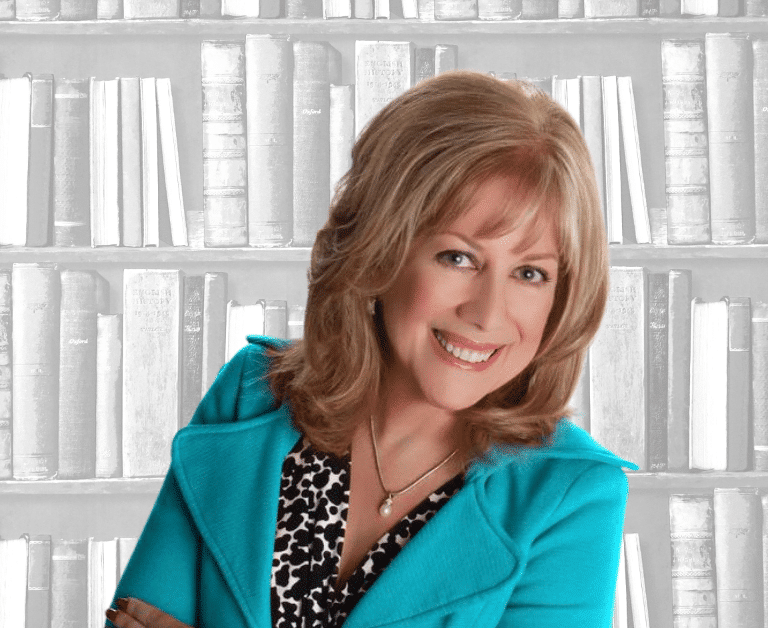Last Updated on August 21, 2023 by The ZenMaid Team
Sustainability in your maid service
Want to have a positive impact on the environment? Believe it or not, your cleaning business can make a difference on the climate.
Sustainability means meeting the needs of the present without compromising the ability of future generations to meet their own needs. It’s based on the simple principle that everything we need for our survival and well-being depends, either directly or indirectly, on our natural environment.
The need for sustainability is even more critical in the current face of climate change.
Why is sustainability important for your maid service?
“Green cleaning” or “going green” seem like buzzwords at times, so it’s easy to look the other way and stick with the status quo. But sustainability is important for your maid service. Here’s why.
Sustainability makes sense. We need to maintain natural resources to maintain our businesses.
It elevates your brand. Today, sustainable practices are seen as part of a higher-end product/ service.
Customers are willing to pay premium amounts for eco-friendly products and services.
Climate change is accelerating faster than ever before. We’re seeing unusually high numbers of floods and fires around the world. Sustainability isn’t something we need to do in the future; we’re talking about things that we need to do now.
Sustainable practices don’t just help the planet – they benefit your business
From the customer’s perspective, sustainability:
- Aligns with your values
- Creates an emotional client-customer bond
- Establishes a higher perceived value of services rendered
To attract like minded-clients, show them what matters to you. When you’re able to show your values, you attract customers that align with your values.
Create a strong emotional relationship with your cleaning clients. Emotionally bonded customers are not ones to leave your business even if things get difficult — and that’s really valuable in this day and age.
When good clients see that you go above and beyond to dedicate your business to environmentally friendly practices, they continue to use your services and promote them to others. Essentially, customers are willing to pay more for companies that give back to their communities.
77% of Americans are concerned about the environmental impact of products and services they buy. Of that number, three in five people are willing to pay more for those sustainable products and services.
Pillar one – Reduce and recycle
Over the period of a week or a month, carry out a waste audit. Pay attention to what kind of trash your cleaning business creates.
If you’re throwing away a lot of plastic jugs, maybe there’s something that you can do to reduce that amount. Can you buy chemicals in more concentrated forms?
If you notice a lot of plastic water bottle waste, buy reusable water bottles for your team. (This is a great opportunity to purchase water bottles with your logo to benefit company culture and boost brand visibility!)
Pay close attention to any single-use item in your business. Replace wipes and towels with reusable alternatives.
You’ll also want to audit your water usage. Things like only running a dishwasher or washing machine when it’s full can really help here.
Next, check your paper waste. This is a difficult part of the audit. Most businesses struggle with excess paper waste. Always ask yourself whether you really need to print out more paper. Switch to electronic copies of bank statements whenever possible.
You can also use the ZenMaid app to work digitally on payroll, work orders, etc. There’s no need to waste paper when easy-to-use apps exist!
Want to learn more about simplifying your cleaning business with ZenMaid? Check out this article!
Set up a recycling station in your office for plastic, paper, and glass. You can also responsibly recycle e-waste like computers and phones.
Pillar two – Consider your suppliers
Cleaning supplies – This is a great place to go green! Better Life, Melaleuca, and Speed Cleaning sell great green cleaning alternatives in bulk.
Uniform – The most sustainable uniform is practical, comfortable, and durable. If you buy cheap uniforms, you’re choosing quantity over quality. Instead, pick uniforms that your employees like to wear that will last a long time. (Avoid polyester and other plastic-based fibers.)
Transportation – If you own company cars, switch them out for electric or hybrid vehicles whenever possible. If you don’t provide company cars, incentivize efficient car use for your employees.
Energy – If you have a physical office for your business, switch to a green energy provider.
Office Supplies – Recycle paper and reduce the use of plastic files. Look for recycled, compostable, and recyclable products.
Banking – Research ethical banking in your area. Many large corporate banks invest heavily in unsustainable practices. As a general rule, local banks tend to be more sustainable.
How to find the right suppliers for your maid service
- Buy local whenever possible. Local products reduce your carbon footprint and keep money in your local economy.
- If searching for eco brands seems like an endless task, never fear! Online guides help you find supplies with eco certifications.
Pillar three – Going green in every client’s home
Imagine the difference you can make when your business (that services, say 50 or 100 clients every week) manages to be a little bit greener in every person’s home!
Here are some ways to go green in the home right now:
- Water: Train cleaners on efficient water use and switch off the taps
- Energy: Turn off lights and open/close windows as necessary
- Waste: Use reusable cloths, buy in bulk, and recycle where possible
Keep an eye out for things you can do in the future to help your clients to be more sustainable.
Educate clients on saving water and energy in their homes. Point out any leaky taps or inefficient items.
Offer to switch out lightbulbs for LEDs or CFLs. You can even sell and then install lightbulbs for your clients.
Supply handouts or information on your website to inform your clients of sustainable practices they can implement in their homes.
Pillar four – Get the team on board
This one’s pretty simple: get your team excited! People are better workers when they feel valued in a healthy community.
- Get your team motivated through incentives
- Brainstorm company fundraisers
- Solicit suggestions to get new ideas from employees
- Carpool to and from work to reduce emissions
- Reward green goal achievements
- Capitalize on remote work whenever possible
Pillar five – Go sustainable online
This is something that a lot of people don’t think about, but your online presence can have quite a big carbon footprint.
A single Google search emits seven grams of co2. With 4.5 billion internet users who have billions of searches a day, that adds up really fast! Most of the footprint comes from the cost of cooling down servers that are hot from data transfers.
One of the easiest things that you can do is declutter your saved files. If you’re anything like the rest of us, you probably have a lot of files that you don’t necessarily need anymore. These files may be stored in places like Google Drive, Dropbox, or your email. Go through each of these digital platforms and declutter.
Then, cut out unnecessary email and systems for schedules, work orders, hiring, and training.
Choose audio calls over video calls whenever possible to reduce bandwidth. There are occasions when it’s better to use video. For example, if you are doing an interview call with someone, it’s really important to see your future employee face-to-face. For most of your calls however, an audio call can serve your purposes.
For better customer service, better SEO, and more sustainability, speed up your website. Learn more about boosting your website’s SEO here.
Don’t forget about hosting. Switch to green web hosting with DreamHost or GreenGeeks. Use hosting systems that use green energy, such as wind power or solar power. You’ll also want to find a server that is based in your country.
Pillar six – Offset your footprint
What does that mean? You hear the term “carbon footprint” thrown around the media. A carbon footprint is the total amount of greenhouse gas (including carbon dioxide and methane) generated by our actions.
Everything we do has a carbon footprint associated with it. This is the amount of CO2 emitted by that particular item or activity. Some actions are larger (like flying), while others are smaller (like eating a bowl of cereal). Your carbon footprint is a sum of all of these totals.
The good news is you can offset your business’ footprint. Here are a few ways:
- Reduce – implement whatever you feel you can in your business to reduce your footprint
- Calculate – determine the extent of your remaining business carbon footprint
- Offset – neutralize whatever you cannot reduce (i.e tree planting)
What exactly is tree planting and carbon offsetting?
Tree planting is pretty self-explanatory. This uses partner organizations that plant trees in various locations across the globe. Trees fight climate change and positively impact their ecosystems.
Carbon offsetting is a slightly more complicated concept, but it basically means that you contribute to green energy projects across the globe. These projects actively remove carbon in real-time. For example, you might contribute to a solar farm or a wind project.
The benefit of tree planting is that trees go on to capture carbon for many years to come, as well as providing essential habitats and food for animals and humans alike. Not all tree planting is created equal though, so be sure to research your provider to make sure they’re planting the right types of trees and protecting them for the long term.
Your next steps towards sustainability
It seems daunting at first, but really, fighting climate change can be as easy as 1-2-3! Choose a plan, track your impact, and build your business. Check out Plant:Grove to learn more about carbon footprints and to neutralize your business’ impact.
Are you taking steps to make your maid service more sustainable? We’d love to hear how! Drop a comment below to let us know.
If you found this article helpful for your maid service, you may also like:
- How Cheryl Hajjar Added $75k to Annual Revenue With One Maid Service Tool
- Q&A with Stephanie Pipkin: Lead Generations Tips for Maid Service Owners
- 10 Things I Do in a Day as a Maid Service Owner
- The Ultimate Guide To SEO for Cleaning Companies [2024 Guide]
- Start Delegating Like a Pro: VA Delegation for Maid Services
About the presenter
Fran founded Plant:Grove to make it easy for ordinary people to tackle the climate crisis. Plant:Grove plants trees on behalf of your business, so you can get back to doing what you do best.
To hear Fran Cresswell-Ghose’s full talk from the Maid Summit, click here.
This talk first aired at the 2021 Maid Service Success Summit.
The Maid Summit is an annual online event that brings together the most successful leaders in the cleaning industry, like Debbie Sardone, Angela Brown, Courtney Wisely, Amy Caris, Chris Schwab and more. Get free access to masterclasses and workshops that will help you to grow, scale and automate your cleaning business so you can get more leads and create more profit. Make sure you’re on our email list to find out how to get free tickets to the next event.
Try ZenMaid for free!













